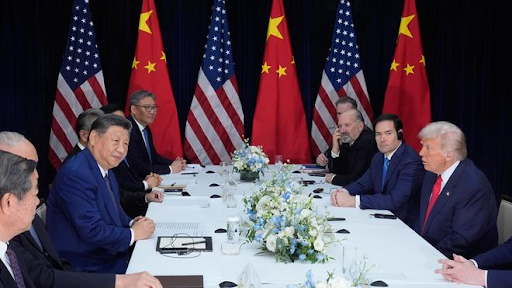




Copyright infringement not intended
Picture Courtesy: https://www.thehindu.com/opinion/op-ed/a-mixed-report-card-for-the-india-middle-east-europe-corridor/article68859565.ece
An Indian delegation recently visited the UAE to discuss the progress of the India-Middle East-Europe Economic Corridor (IMEEC).
It is a transcontinental project that aims to promote economic development by increasing connectivity and integration between Asia, the Persian Gulf, and Europe.
It was announced in September 2023 at the G20 summit in New Delhi. India, the United States, the United Arab Emirates, Saudi Arabia, France, Germany, Italy, and the European Union all signed the Memorandum of Understanding for IMEC.
It is expected to cut transit time by 40% and costs by 30% compared to the Suez Canal route.
It also includes establishing undersea data cables and long-distance hydrogen pipelines to achieve climate and decarbonization goals.
|
The IMEC secretariat would organize and structure IMEC operations, develop frameworks for cross-border trade facilitation, and provide research-based information on the benefits for participating countries, potentially attracting neighboring countries to join the initiative. |
It aims to improve transportation and communication between Europe and Asia via rail and shipping networks, providing an alternative trade route to the Suez Canal and a counter to China's Belt and Road Initiative.
It consists of two separate corridors: the east corridor; connects India to the Gulf, and the northern corridor; which links the Gulf to Europe.

A shipping route connects Mumbai and Mundra (Gujarat) to the UAE. A rail network to connect the UAE, Saudi Arabia, and Jordan to the Israeli port of Haifa, allowing access to the Mediterranean Sea.
Haifa will be connected by sea to Greece's Piraeus port, which will serve as a link to Europe through existing transportation networks.
The eastern section connecting the UAE and Indian ports is progressing faster due to India and UAE's strong economic ties. The Comprehensive Economic Partnership Agreement (CEPA) has significantly increased trade between the two countries, especially in non-oil sectors.
The main challenge on the western part of IMEC is the ongoing conflict between Israel and Palestine, which has disrupted plans and impacted Saudi Arabia and Jordan's participation, as they would need to work closely with Israel on the project.
|
Must Read: WAR IN WEST ASIA |
India should improve its port infrastructure, create economic zones along connectivity nodes, and improve domestic digital and logistics capabilities to reduce export costs and time, thereby increasing competitiveness.
India aims to establish itself as an alternative global supply chain hub through IMEC. To achieve this, India must increase its manufacturing competitiveness and integrate more deeply into global value chains.
Must Read Articles:
INDIA-MIDDLE EAST-EUROPE ECONOMIC CORRIDOR (IMEC)
INDIA-MIDDLE EAST-EUROPE ECONOMIC CORRIDOR
Source:
|
PRACTICE QUESTION Q.The Memorandum of Understanding (MoU) for the India-Middle East-Europe Economic Corridor (IMEC) was signed at the 2023 G20 New Delhi summit. The proposed corridor passes through which of the following countries? 1. United Arab Emirates 2. Saudi Arabia 3. Israel 4. Greece Select the correct answer using the codes given below: A) 1, 2 and 3 only B) 2, 3 and 4 only C) 1, 3 and 4 only D) 1, 2, 3 and 4 Answer: D Explanation: The India-Middle East-Europe Economic Corridor (IMEC) is a planned economic corridor that aims to boost economic growth by promoting connectivity and integration between Asia, the Persian Gulf, and Europe. The corridor is a proposed route from India to Europe via the UAE, Saudi Arabia, Israel, and Greece. The governments of India, the United States, the United Arab Emirates, Saudi Arabia, France, Germany, Italy, and the European Union signed a Memorandum of Understanding (MoU) in September 2023, at the G20 New Delhi summit. |




© 2026 iasgyan. All right reserved